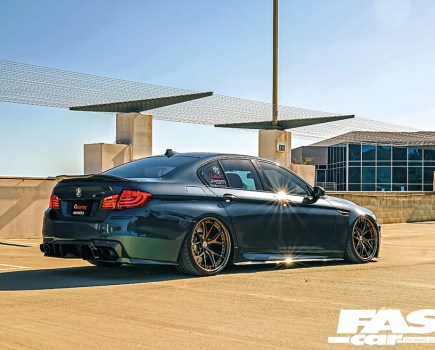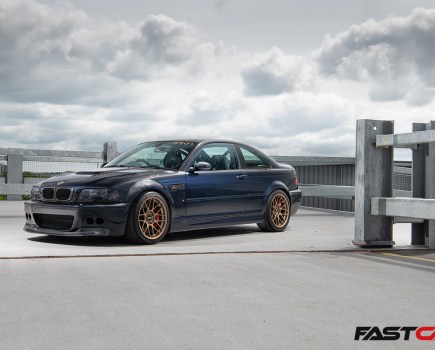Tom Baker’s supercharged E92 M3 goes beyond the usual scope for such a build. This modified BMW looks like a racecar, and performs like one too.
Most supercharged E9x M3s run a centrifugal kit, but this track E92 build is packing a positive-displacement punch that gives it monstrous torque, epic whine and over 640hp to play with, and it’s an absolute beast.
Once upon a time, much in the same way that, during what we assume must have been a heavy night on the bier and brats, BMW’s M engineers decided that stuffing a five-liter V10 into the engine bay of the E60 M5 was a good idea, the decision was made to give the fourth-gen M3 some V8 muscle.
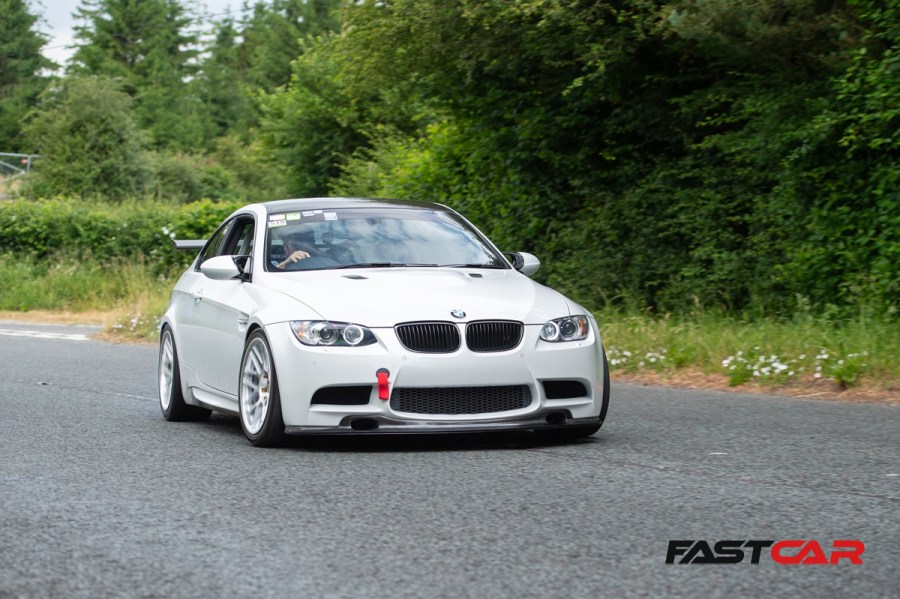
M3 V8 history
This wasn’t the first time that BMW had mixed V8s and M3s, because before the E9x M3 came the E46 M3 GTR, of which quite literally a couple of road-going examples were built, and if you have the funds and can find one, you can buy one. However, as far as attainable and readily available V8 M3s go, the first mainstream mass-production model was the E92 M3. The decision to bless it with the S65 V8 was a very good one indeed because that combo created an incredible car. The only real criticism people had was the relative lack of torque, which meant you always had to work the engine to get the most out of it.
While any of the many centrifugal supercharger kits available for the S65 V8 do improve drivability, the way they build boost and deliver power means they still don’t fully compensate for the lack of low-end grunt. For that, you need something different – you need a positive-displacement supercharger, which makes full boost instantly, and delivers massive amounts of torque at low revs. And that’s exactly what you’ll find under the bonnet of this mighty E92 M3…
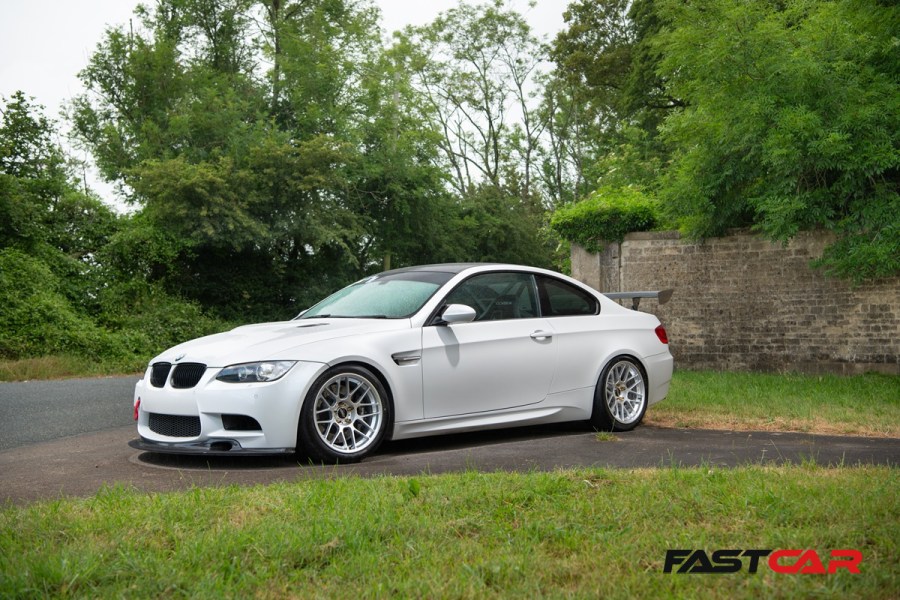
Meet Tom…
Its owner is Tom Baker, and he’s been a BMW fan for most of his life. “My dad always had 5 and 7 Series models growing up, so I knew they were good build quality and then later found out the smaller variants handle very well,” Tom explains. “After getting the Japanese car bug out of my system with various variants, I moved to the E92 M3,” he says, and it sits alongside an E70 X5 xDrive40d and a G26 i4 eDrive40e. This trio spans a wide range of models, forms of propulsion and driving experiences, though we wager the M3 is the most exciting one.
So, just what led Tom to buying himself an E92 M3? “I’ve always liked them since 2007 when I first saw one on the road. It has the RWD, the chassis, the V8 motor and the refined quality and road presence,” enthuses Tom. “I bought mine in 2015. It was in very good nick, one of the only cars I’ve bought in such untouched condition. It had 19,000 miles on the clock and was three years old; I bought it from a high-end car dealer in Peterborough. It’s done only around 3000 miles per year since I’ve owned it, and it’s garaged most of the time now, although it was used as a daily in the beginning,” he adds with a smile.
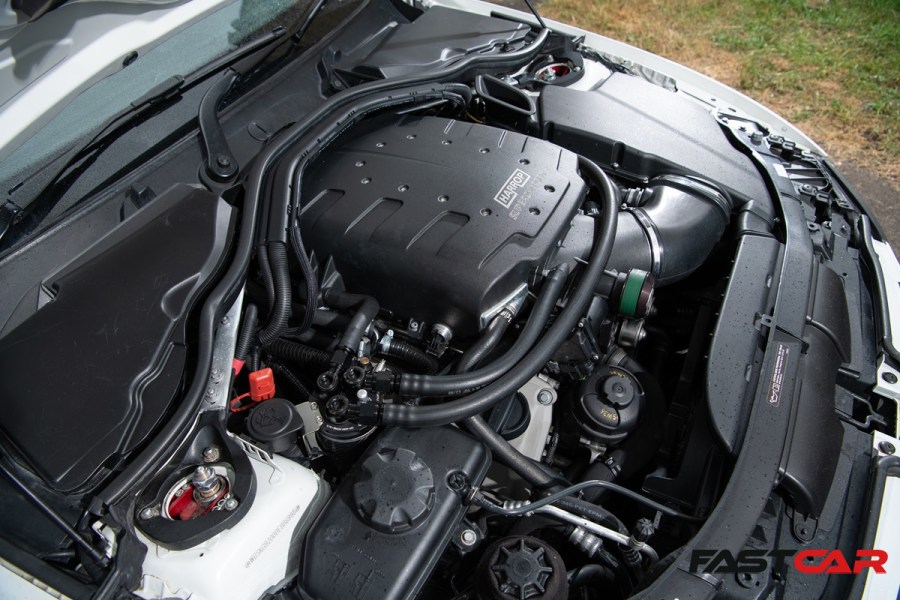
Harrop twin-screw supercharger kit
Tom went into M3 ownership fully intending to keep it stock, but, with a history of modified Japanese machinery behind him, it was inevitable that he would eventually succumb to the call of some mods. “I first took the car to Stage 2 NA within six months of owning the vehicle. This was then followed by a Harrop supercharger kit around one-and-a-half-to-two-years later, fitted by myself; the kit was very luckily sourced second hand,” says Tom and considering how expensive the kit is new, and how rare it is second hand, he was very fortunate with that find.
“The Harrop supercharger setup uses a TVS twin-screw ’charger, not a centrifugal one – this type of setup increases power everywhere and really woke up the engine where I wanted it (in the mid-range). I found the car was frustrating at times with the lower torque, and changing down three gears to overtake was becoming tiring – I’ve come from Hondas and really didn’t want to keep this character ongoing,” explains Tom. “The kit was running in stock guise for four years and made around 580hp,” and that’s a healthy figure, but Tom had more in mind.

Engine management
“I nearly implemented an Interchiller but decided with track work this wasn’t the right solution for intake air temperature control. I then decided to just upgrade the chargecooler pump to a Pierburg unit that out-flowed the original Bosch significantly, extended the chargecooler pipework under the car and fitted a large 20-litre reservoir in the rear seat delete area. This increases the time it takes to heat up water, much like a full kettle vs a cup-worth of water, and this will buy time on track where I want to maintain the power for as long as possible without timing retard,” he explains.
“I then upgraded to a Syvecs S7-Plus ECU, which has many features. Some of the ones I’ve utilized include electronic bypass control, which enables you to control boost levels much like a wastegate on a turbo. I also currently have three maps: one is open, making the car effectively NA. Two is part-boost, and three is full boost. I also have control to switch on the secondary fuel pump when needed (boost-dependent), as well as DCT clamping pressure control increase to reduce the chances of damaging the clutches from the increased torque.
I also added larger injectors and a larger lower pulley that spins the ’charger faster to achieve over 9 psi of boost. The kit now generates just under 650hp with massive amounts of usable power and torque across the rev range that is unchallenged by any other kits on the market,” Tom says with a smile, and it’s made this M3 into an absolute monster.

Chassis & suspension
As you can see from the photos, Tom’s M3 has been built to tackle the track, and that means that the chassis has undergone some serious upgrades to ensure it can handle anything any circuit can throw at it, as well as ensuring Tom can enjoy using all that power. “The car was originally running an EDC and Comp Pack spring setup, and I changed these out for Bilstein B16 Damptronic coilovers that worked with the EDC. Although they were great on the road, they weren’t much good on track, so after having these for a few years, I switched over to Intrax 1K2s, and although I’ve not used them on track yet, I can feel they’re a lot more stable at speed.
“Alignment and corner weighting were carried out by Cooksport. I changed over the rear subframe bushes to solid previously, and all the rear bushes have been converted to uniball connections for reduced slop with acceptable compliance,” Tom explains, and that’s a seriously comprehensive selection of chassis enhancements. The E92 M3 isn’t exactly lacking in the handling department as standard, but Tom’s selection of upgrades has given it a razor-sharp chassis that responds to his inputs instantly.
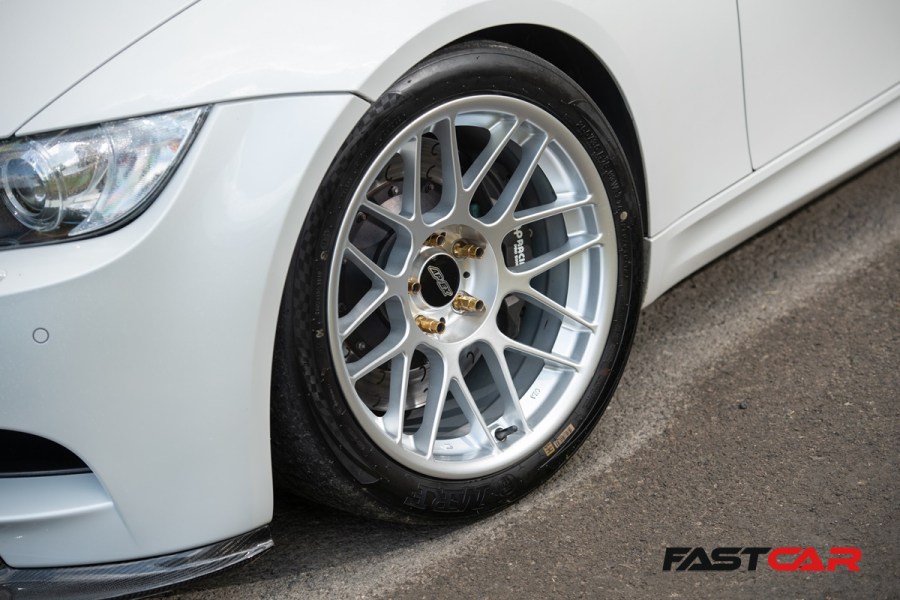
Wheels, brakes & tires
Serious track work requires serious wheels, and Tom has a dedicated set, which his M3 is wearing in the photos. “Currently, I still have my Comp wheels for road bias/wet work and for everything else the ARC-8 from Apex Wheels. It’s a very popular wheel on this car, and I think it looks very nice; they’re light, strong and clear the brakes, and for tires, I have MRF ZTRs, which are good for grip and wear very well.” The ARC-8 is one of the M3 community’s go-to wheels for the E9x model, and as Tom says, these are lightweight, flow-formed wheels that have been designed for use on track, as well as looking good.
And when he mentions brake clearance, he needs it. He’s running massive AP Racing BTCC stoppers up front that deliver effortless braking performance without breaking a sweat, with Pinnacle brake cooling ducts giving a helping hand, while a set of F80 M3 brakes have been fitted at the rear.
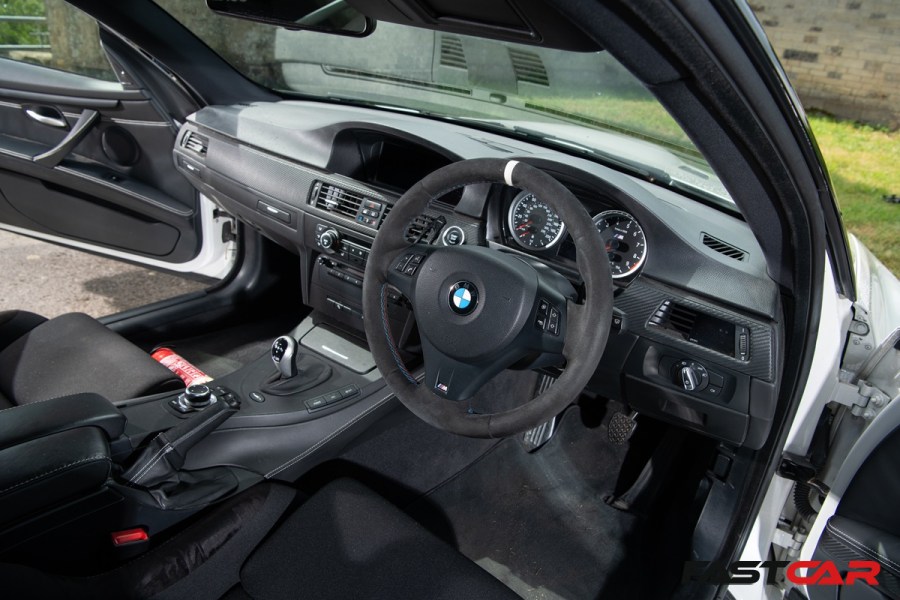
Interior & exterior
As far as aesthetics are concerned, Tom has added a few carbon pieces that have given the already muscular M3 body some added aggression in the shape of a GT4 V2 front splitter, a GT4 wing and a diffuser, along with black Harrop and M3 badges for the finishing touch, and the carbon elements combine perfectly to give this M3 some serious presence.
Things are a little more full-on on the inside, though, with Tom giving his E92 the sort of cabin you’d expect from a hardcore track car. “The seats are the Corbeau Clubsport XLs, which I bought with the intention of upgrading to Recaros later, but, to be honest, they have been great and very comfy. The harnesses are Schroth, I got the steering wheel retrimmed by Royal Steering Wheels, and I changed the paddles. The rear cage is from Pinnacle, and the rear seat delete I made myself and mounted the chargecooler tank,” he explains. The Alcantara wheel looks fantastic, while the extended carbon paddles are easier to reach when pushing hard on track. Then you’ve got those super-supportive Corbeau buckets and the white cage that finishes the cabin off perfectly.
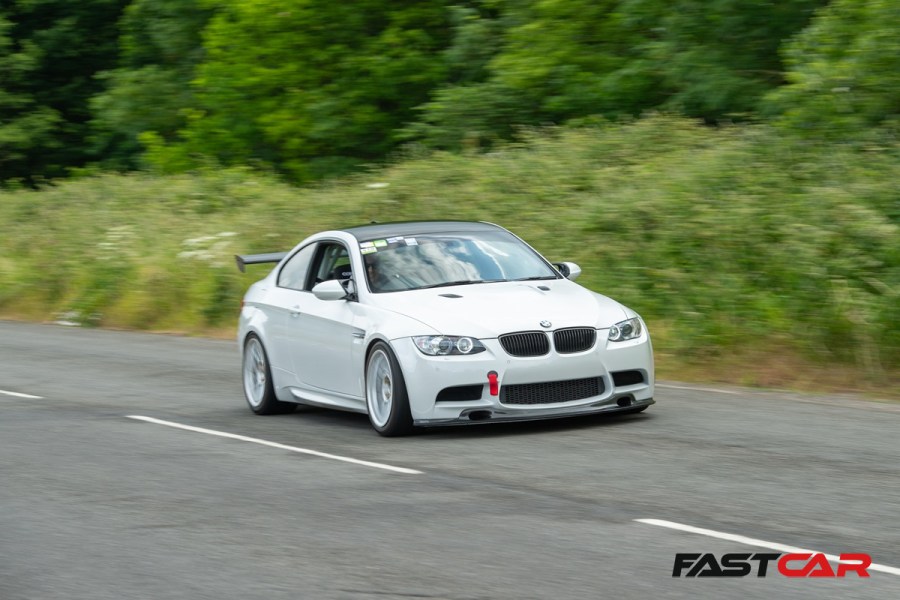
The verdict
Tom’s spent seven years building his M3, on and off and considering he started out with the intention of keeping it stock, that makes the supercharged monster he’s ended up with all the more impressive. The star of the show is that supercharger kit, and it’s Tom’s favorite part of the build: “My favorite modification has to be the ’charger,” he grins. “The noise, the grunt – it really made me fall in love with the car again,” he enthuses. With the car now finished, it’s time for Tom to put all that supercharged power to use on road and track and drive this M3 exactly like it was built to be driven.
If this has build has sparked some creative ideas of your own, check out our run-down of the best V8 BMWs that could form the basis of your next project…
Words: Elizabeth de Latour, Photos: Ade Brannan


